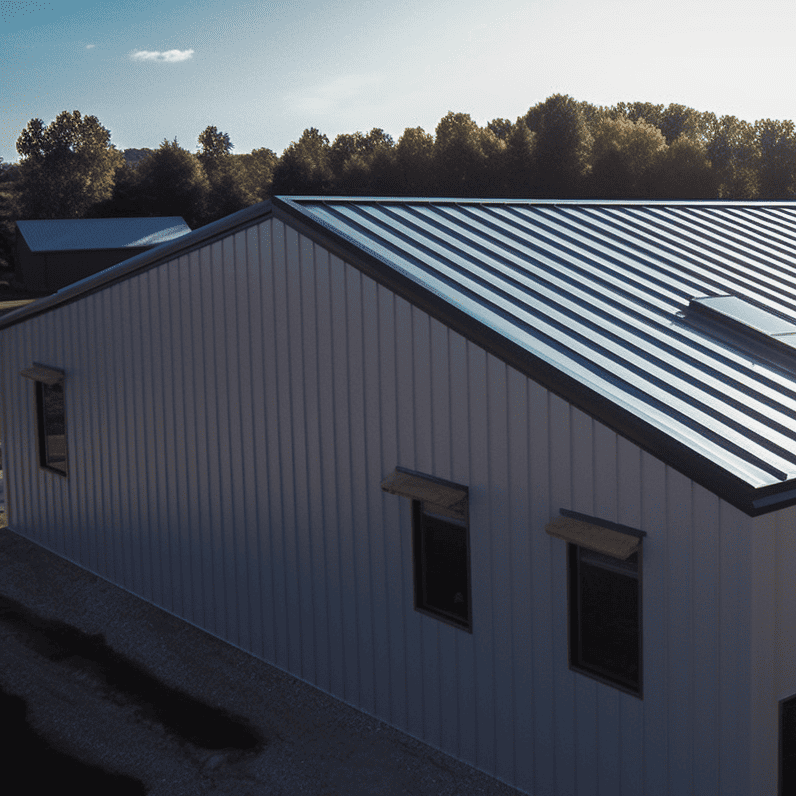Every construction project seems like a puzzle, doesn’t it? It encapsulates a mix of deadlines, precision, and an array of expertise. But what happens when an unforeseen piece, often tagged as “hidden construction costs,” suddenly skews your budget? While most builders anticipate some unforeseen expenses, many are still taken aback by the scope of additional costs they hadn’t foreseen.
Understanding Hidden Construction Costs
Hidden costs in construction are typically expenses that are either unforeseen or underestimated during project planning. These sneaky expenses can significantly inflate your budget and derail timelines if not adequately managed. Whether you’re erecting a sophisticated commercial hub or simple steel garage kits in Ontario, being forewarned is forearmed. But how do these costs creep into a project, and how can you prepare for them?
Initial Planning Pitfalls
The first enemy of a smooth construction project is poor planning. An incomplete or ill-drafted plan often leads to miscalculations of the required materials, leading to exceeding your budget limits. A meticulously crafted Cost Estimation Guide for Steel Buildings can mitigate such risks by providing a comprehensive breakdown of estimated materials and associated costs.
Increase in Material Costs
Material prices are akin to the stock market; they are unpredictable and volatile. A fluctuation in steel prices can significantly augment your project’s cost, especially if you’re relying heavily on durable builds like steel structures. Market changes could mean costs have increased since the estimation, affecting the total expenditure.

Regulatory Fees and Permits
It’s a classic bureaucratic dance; every region has its set of regulations and compliance standards that must be met. Often, the costs for permits and fees are underestimated or overlooked, presenting hidden costs that could disrupt your budget. Familiarizing yourself with local compliance standards may preempt unnecessary financial surprises.
Weather-Related Delays
Weather is the wild card of construction projects. Rain, snow, or extreme temperatures can delay work, costing you more in time and money than initially anticipated. While you can’t control the weather, incorporating weather allowances in your contingency budgeting can provide a buffer against these unpredictable elements.
Strategies for Mitigating Hidden Costs
Years of industry expertise and insights from the Canadian Construction Association – Hidden Costs in Construction highlight several strategies for minimizing unforeseen expenses. But like any strategy, the success lies in its execution.
Comprehensive Planning and Estimation
Adopt modern planning tools and estimation methods that incorporate both current and historical data to forecast expenses accurately. Utilize expert guides like the Cost Estimation Guide for Steel Buildings to develop precise material and cost predictions.
Incorporate a Flexible Budget
Unquestionably, a flexible budget with a well-planned contingency fund is the bedrock of handling hidden costs. Strategically incorporating a contingency fund can help cushion unforeseen expenses, enabling the project to continue without significant financial hiccups.

Effective Communication and Management
Ensuring transparent communication between all stakeholders—engineers, architects, contractors, and clients—is pivotal in addressing potential issues before they balloon into significant financial burdens. Regular updates and clear channels of communication can mitigate risk and prevent misalignments.
Adopting Outsourcing Practices
Sometimes hiring experts for specific tasks can be cost-effective. Outsourcing ensures that specialized tasks are handled efficiently and can reduce the potential for expensive mistakes down the line. Partnering with experienced professionals to achieve complex tasks can optimize resources while maintaining quality.
Consider Modular Options
Modular construction can be a cost-effective alternative due to its efficiency. Pre-fabricated structures like steel garage kits Ontario offer high-quality outcomes with potentially reduced individual costs due to economies of scale.

Final Thoughts
Hidden construction costs are an inevitable reality within any construction project. Yet, with judicious planning, effective communication, and incorporating built-in contingencies, these costs can be managed. Successful project completion requires staying a step ahead, anticipating the unexpected, and adapting to the ever-changing landscape of construction. By applying cost-saving construction strategies and careful planning, you ensure a smoother, more predictable path to project success, keeping your budget intact amidst the uncertainties.
In conclusion, preparation is your strongest ally against the often unpredictable nature of construction projects. Emphasizing the significance of thorough planning, anticipating regulatory requirements, and staying adaptable to market fluctuations can significantly reduce unforeseen financial strains. Remember that knowledge, after all, is power, whether it comes from an efficient cost estimation or insights from regulatory associations. By investing time in preparation, you pave the way for a successful build—even in the face of hidden costs.









